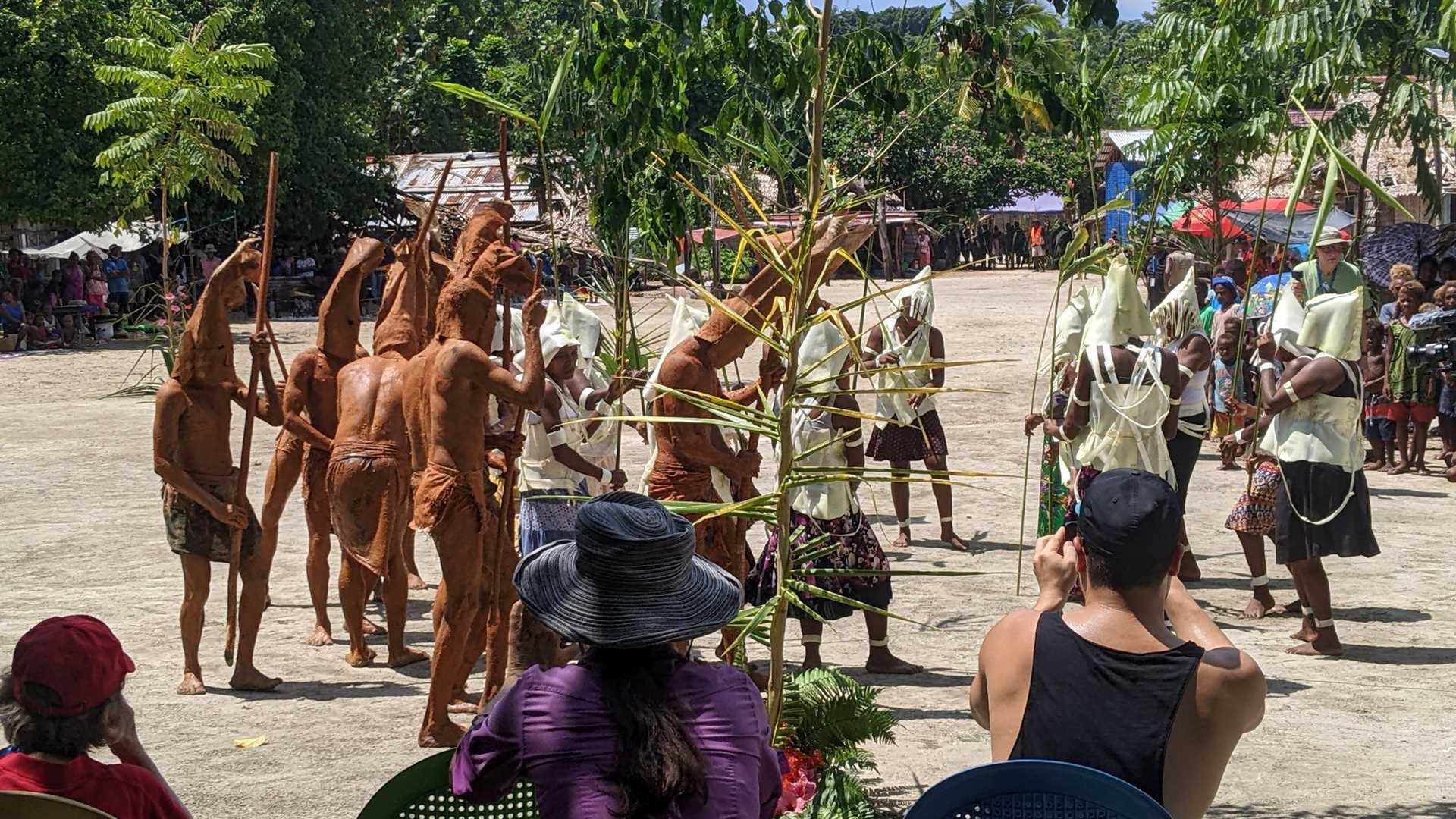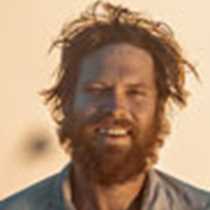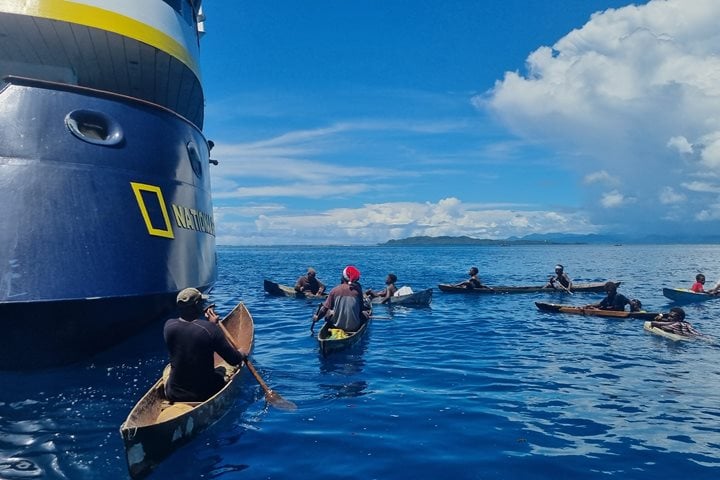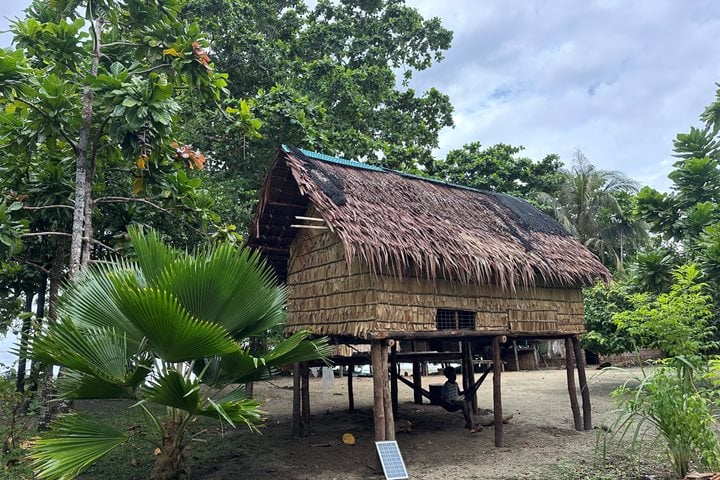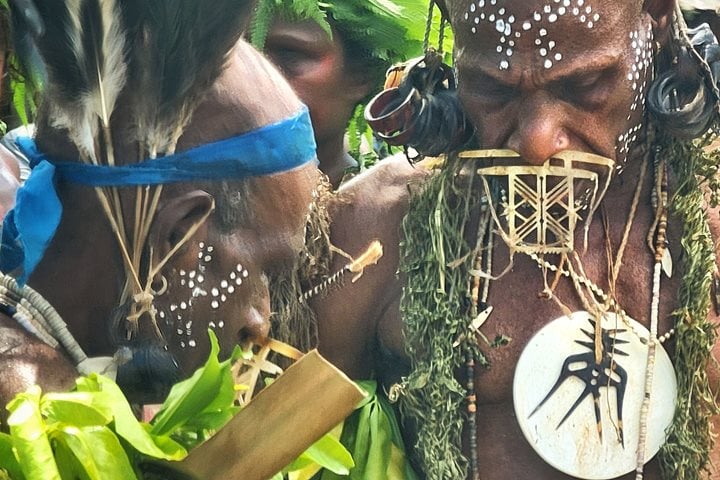In the morning sun, a few early risers searched for birds with naturalist Mike Greenfelder on the bow of National Geographic Orion. A light yoga class on the sun deck loosened our muscles in preparation for the day ahead. By 7:00 a.m., we were within view of our destination. The views of Owaraha Island and the varying shades of aquamarine in the surrounding reef were breathtaking.
Located in the Solomon Islands, the coral island of Owaraha is just over 25 square kilometers. There are three separate villages and just under 4,000 inhabitants. As we plunged our feet through the water and into the soft white sand, we experienced a feeling of magic. Our boats were greeted by shouting warriors who ran to the beach with spears. Just two days ago, we were all going about our lives. Today we were in a small tropical rainforest village on an island. It took a moment for the shock to wear off! We were guided through the village by elders and ecstatic children who shared our high fives and asked for our names. Wood carvings lined with abalone shells were for sale in the village center. The quality of the art was outstanding.
Our guests were seated beneath a large tree and treated to a truly remarkable experience of local culture. Musicians in grass skirts played vibrant songs as throngs of dancers took center stage. The first songs told the stories of butterflies, the collection of food, and life on the island. As the show went on, it built to a battle of the mud men. Villagers covered in black mud defeated those in red for the favor of the women of the village. As I sat with an elder during the show, he told me how much it means to have visitors support the community in keeping their rituals alive.
We took a two-mile trail, walking over a hill and past the school, which led us to a village on a white sand beach. I walked with Peter, a member of the local school board. He pointed out graves along the way as the children continued to walk with us. Near the water, we came upon an open-walled, sacred structure known as the spirit house. To enter, we climbed over a few logs that serve to mark the space. On opposing sides of the spirit house, ancestral clans of Turtle and Snake are represented. In these spaces, the bones of each clan’s chiefs are preserved. It is believed that the spirits of the chiefs live within the house.
When we left, the sun hung directly over us, and the walk back was a challenge. Guests of National Geographic Orion earned the drinks awaiting them on board. There was a playful energy throughout the lounge as our freshly showered guests told stories and laughed about the day. We watched the sun set as we pulled away and headed towards our next island destination.

